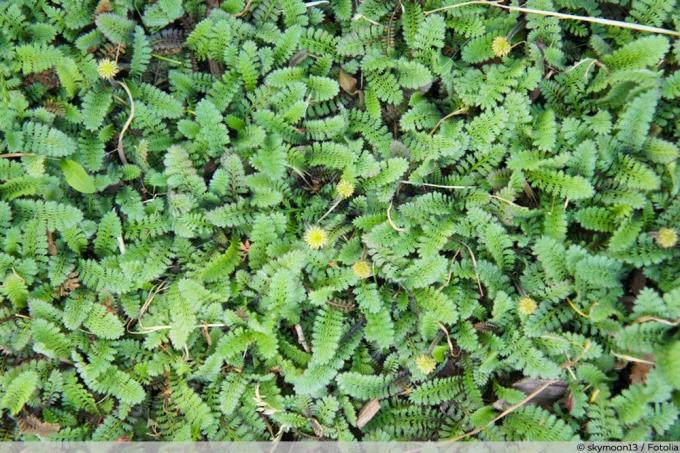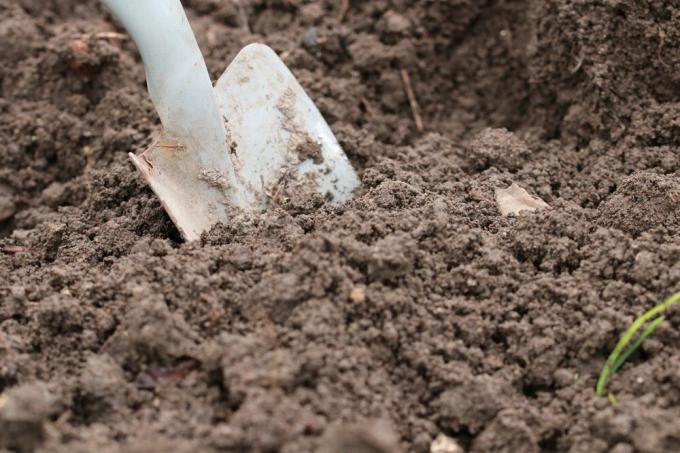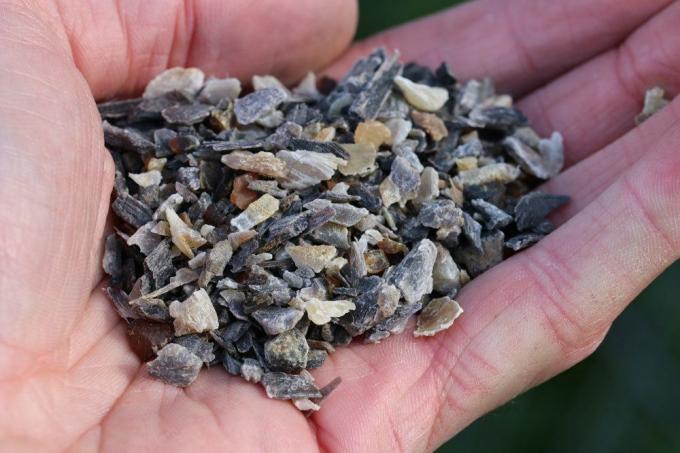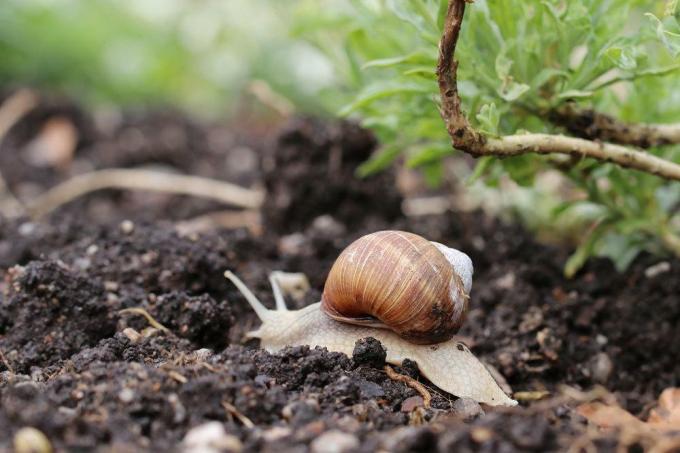
table of contents
- Characteristics
- Location
- floor
- plants
- to water
- Fertilize
- Cut
- Overwinter
- Multiply
- Foothills
- share
- Diseases
- Pests
- Spider mites
- Snails
Profile and care information open +conclude -
- Flower color
- yellow-green
- Location
- Partial shade, sunny
- Heyday
- May June
- Growth habit
- flat-growing, perennial, creeping
- height
- up to 15 cm high
- Soil type
- sandy, loamy
- Soil moisture
- moderately moist, very moist, fresh
- PH value
- neutral
- Limescale tolerance
- Calcium intolerant
- humus
- rich in humus
- Poisonous
- no
- Plant families
- Asteraceae
- Plant species
- Ground cover, Fragrant plants, cushion shrubs
- Garden style
- Grave planting, bog bed
The plumage is very popular in local areas, especially as a substitute for lawn, because it is relatively easy to care for and undemanding. But it doesn't work entirely without care. Due to the low growth height and the finely structured leaves there is a risk of being displaced. Proper care prevents that. The plant guide explains what this looks like and what to look out for when replacing lawns with plants.
Characteristics
- Name: plumage pad
- Scientific name: Cotula potentillina
- Common names: feather carpet, lye flower
- Family: Asteraceae (Compositae)
- Height: five to 15 centimeters
- Evergreen
- Flower: yellow from May to June
- Rapid, dense growth
- Mediocre crush resistance
- Lime intolerant
Location

The location for the feather carpet is one of the most important factors in the area of care and maintenance it must be taken into account if the plants serve as a healthy lawn substitute for a long time and are not displaced should. The following prerequisites are ideal for this:
- Light conditions: sunny to partially shaded
- moderate to high humidity
- optimal location by ponds, near the sea or lake
- sheltered from the wind
- prefer mild winter locations
floor
The soil properties determine how long the Cotula potentillina will thrive and how much care will be required. The better the soil meets the requirements of the plant, the easier it is to care for in soils that meet the following conditions:
- rich in humus
- low to moderate nutrient content
- Permeability
- uniform humidity
- fresh soil / no compaction
- well drained (to prevent waterlogging)
- lime-free to lime-free
- pH value: neutral around 7.0
Note: The feather carpet can only spread out if the soil meets the requirements mentioned develop strong enough to hold their own against weeds instead of pushing themselves away from them permit.
plants

Spring has proven to be the best time to plant the lye flowers. This gives you enough time to settle in well before the onset of winter and to face the winter temperatures with sufficient strength.
As a lawn substitute, dense growth should be achieved, which mainly depends on how many plants are planted at what distances from one another. The following instructions show which preparations are necessary for planting and explain the planting process step by step:
- Area completely of weed to free
- Loosen the soil well
- Plants per square meter: 15 to 17
- Plant spacing: about 25 centimeters
- Planting depth: Plant balls around two centimeters below the surface of the earth
- Prepare planting holes around three centimeters deeper than the recommended planting depth
- Lay out a drainage made of gravel or quartz sand about two centimeters high in the planting hole
- cover lightly with soil
- Carefully remove the plant from the container and insert it
- Fill in the soil and press down gently
- all feather carpets are in place, irrigate the area moderately (sprinkling is optimal)
- In the following period it is essential to watch out for weeds and remove them accordingly
Tip: If the soil is too rich in nutrients or heavy so that it tends to compact, it is advisable to enrich it with sand before planting. This loosens the soil structure and reduces the nutrient content.
to water
The feather pad is to be kept evenly moist. The plant does not tolerate drought and reacts quickly with dehydration and growth disorders. The need for water is particularly high after planting and during hot days in summer. Pouring according to the following instructions is ideal:
- Use low-lime / lime-free water (rainwater or at least 24 hours of stale water)
- Sprinkler irrigation (alternative: garden hose with spray gun or watering can with attachment)
- Water temperature: lukewarm (not too cold or too hot)
- Avoid high water pressure - favors waterlogging and soil compaction
- in summer water only early in the morning or later in the evening (otherwise risk of burns and high evaporation)
- better pour several times than once excessively
Winter time
In winter, the feather carpet cannot do without water either. If there is little rainfall, you have to do the irrigation yourself. The so-called bald frost is particularly dangerous for the plumage. This is a rain-free time without a blanket of snow, but with frost. If there is no snow, there is also no frost protection and at the same time the source of moisture for the roots. As a result of the bald frost, the roots also lose their ability to absorb moisture and dry up. It is important to act quickly as follows:
- slow watering to thaw frost cover
- Use cool but not icy irrigation water (too high temperature differences lead to plant damage)
- water during the day when the sun is shining
Fertilize

Fertilizing is not absolutely necessary. However, it does not hurt on special dates, as long as the right fertilizers are used. The fertilization plan for the pinnate pads should look like this:
- Fertilization in the spring before budding (as a start-up aid for the start of growth)
- Fertilizer: organic fertilizer such as compost
- Apply compost thinly
- Horn shavings are also suitable
- then water daily (around a week)
- Avoid waterlogging / over-wetting
Cut
Due to the low growth height of a maximum of 15 centimeters, cutting is not necessary. The annoying lawn cutting is no longer necessary with this lawn substitute. If you like it shorter, you can occasionally use the feather carpet like a conventional one race cut. However, the plant does not like cutting too often, so that it should not be exceeded a maximum of once or twice during the growing season. Otherwise the runners could be shortened, which contribute to a dense growth. This in turn ensures that weeds cannot establish themselves.
Overwinter
The Cotula potentillina is only partially hardy and without special protection can only get along in regions with mild winter temperatures without protection from the cold. The plant can handle sub-zero temperatures of around two to three degrees without damage, but Then at the latest, the lawn substitute should be protected from the cold with one or more materials will. Suitable for this:
- Brushwood (ideal because it is somewhat weighty and therefore less sensitive to wind)
- straw
- leaves
- Pine needles
- Garden fleece (the most expensive variant, but can be used for many years)
Note: In winter the leaves turn brown to black. Contrary to some beliefs, the Cotula potentillina then does not die, but is a natural process. Green leaves appear again in spring.
Multiply

Foothills
The simplest and most promising propagation is to be achieved with runners, which form abundantly on the mother plants, provided that the plumage has optimal conditions. The propagation is to be carried out as described below:
separation
- ideal time: from May to July / beginning of August
- Minimum length of a suitable runners: six to eight centimeters
- Carefully lift the runners off the ground (loosen "anchors")
- Separate from the mother plant
- Use a sharp, disinfected knife
Preparation / materials needed
- small planter
- Cultivation soil or nutrient-poor substrate
- translucent plastic film
- Wooden sticks such as toothpicks
Plants / cultivation
- Cut the separated runners diagonally at the interface
- Loosely attach the wooden stick to the lower handle area (for stabilization)
- An elastic, wide rubber band is ideal - do not use thin binding material, otherwise risk of injury
- Fill the planter with soil or substrate
- Stick the runners with the interface and wooden sticks into the ground
- Pile the soil around the stem and press it down
- water moderately (it is better to spray soil than water so that loose soil does not float away)
- Place the foil over the planter
- Location: bright, sunny, but not full sun
- Ambient temperature: between 20 and 28 degrees Celsius
- if leaves and / or shoots have formed, they can be replanted in normal soil
- let the first winter be frost-free (between eight and 17 degrees Celsius)
- Do not plant out in the garden until the next season from mid-May
share
The pinnate pad is divided differently than is known from most other plants. Here the roots are not divided directly, but simply an area dug out on which the arbor flowers have spread. The procedure is as follows:
- Best time: during the growing season up to July at the latest
- Determine the desired area
- pierce the edges of the surface with a spade (at least eight to nine centimeters deep)
- Carefully lift and remove the surface with a shovel or spade
- Adjust the soil at the destination to the depth of the excavated area
- Lay drainage as described under "Plants"
- Place the feather pad and soil in the excavation and press down lightly
- water well and continue to water generously for at least three weeks
- Pave the ground again at the old location
Diseases
This feather carpet is extremely robust and resistant to diseases. As a rule, it is a matter of care errors when the patient falls ill. The following features are most common and can be avoided or can be brought under control again if you act quickly:
- Brown leaves - cause: too much or direct sun - remedy: provide shade
- Dry leaves - cause: lack of moisture - remedy: remove leaves and water more often and / or more regularly
- Yellow leaves, usually with a loss of stability of the plant - Cause: too much water / waterlogging - Remedy: let it dry off and water less, if necessary check drainage and / or create a new one
Pests

The feather pad is just as resistant as it is with diseases in relation to Pests, of which only a few find their way to the plant. Nonetheless, some pests can create life-threatening situations if left unchecked.
Spider mites
Appearance / recognition
- mostly found on subpages
- fine threads spun between parts of plants
- small, light speckles on the upper side of the leaves
- light leaf color
- later drying up of the leaves
- prefer a dry climate (therefore infestation mostly in the dry season)
Fight
Before resorting to chemical pesticides, garden owners should consider one for the sake of the environment Limit natural product, which experience has shown can be used just as successfully against spider mites. This is neem oil, which is obtained from the tree of the same name. It clogs the parasites' airways and causes them to die. It is available in every well-stocked gardening specialist.
Snails
The gastropoda does not stop at the plumage. It damages all of the greenery by eating away at it and its slimy secretions also ensure that planted areas are sealed off from air. As a result, putrefaction usually occurs if snails are not recognized quickly and kept at a distance. Some measures have proven to be effective against slugs and snails.
Set up screw barriers
- If possible, plant scented plants around the lawn substitute area (e.g. garlic, onions, thyme)
- Snails need moisture - do not water in the evening because snails are nocturnal
- Fill the tipped pot with fresh green waste - attracts snails - then collect and release
- Coffee powder acts like a neurotoxin
- Protective border made of sawdust or stone dust - has a drying effect and blocks the way



